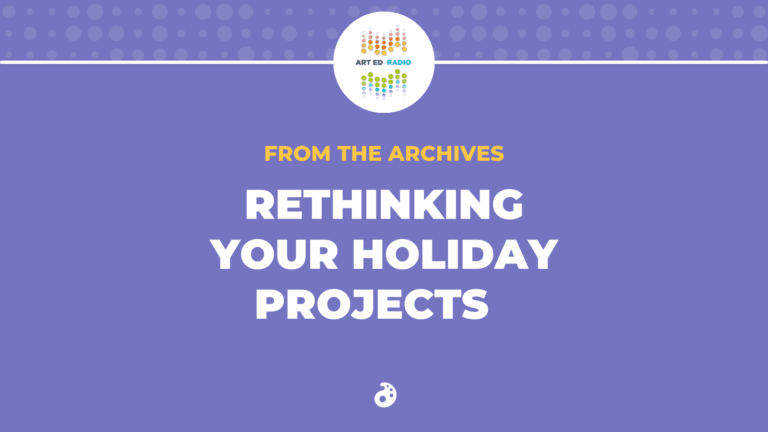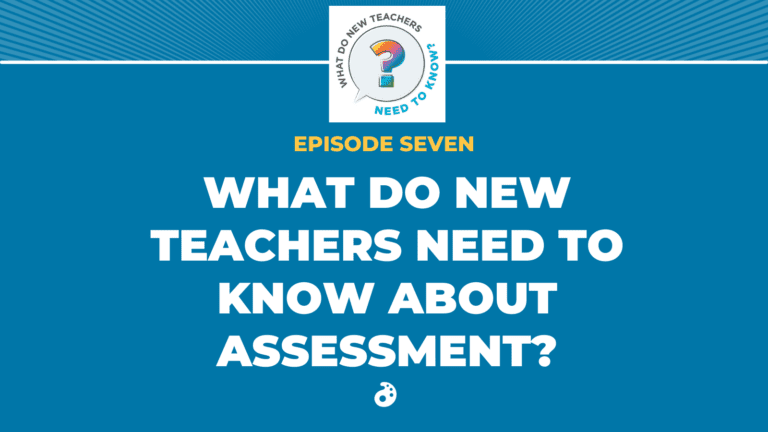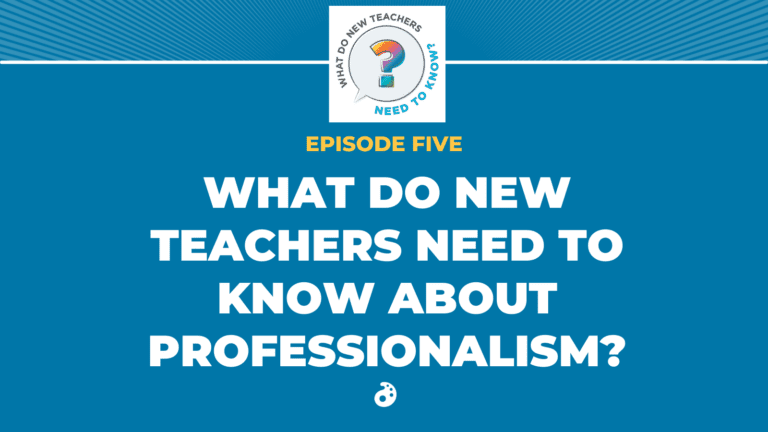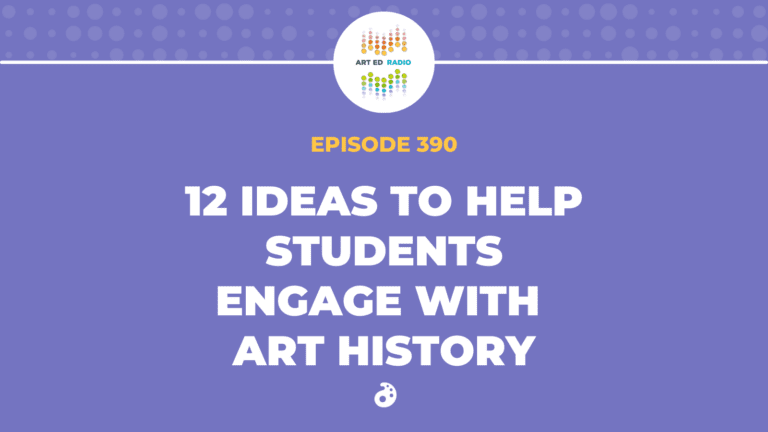Playlists can be a great way to navigate through a project from beginning to end. In this episode, Lindsay Anderson joins Tim to talk about how she designs playlists and how she uses them in the art room. Listen as they discuss the ways that playlists can benefit students, how they encourage exploration, and how they can scaffold the creative process. Full Episode Transcript Below.
Resources and Links
- Follow Lindsay on Twitter
- Read Lindsay’s blog and her post on playlists
- View a playlist example shared by Lindsay
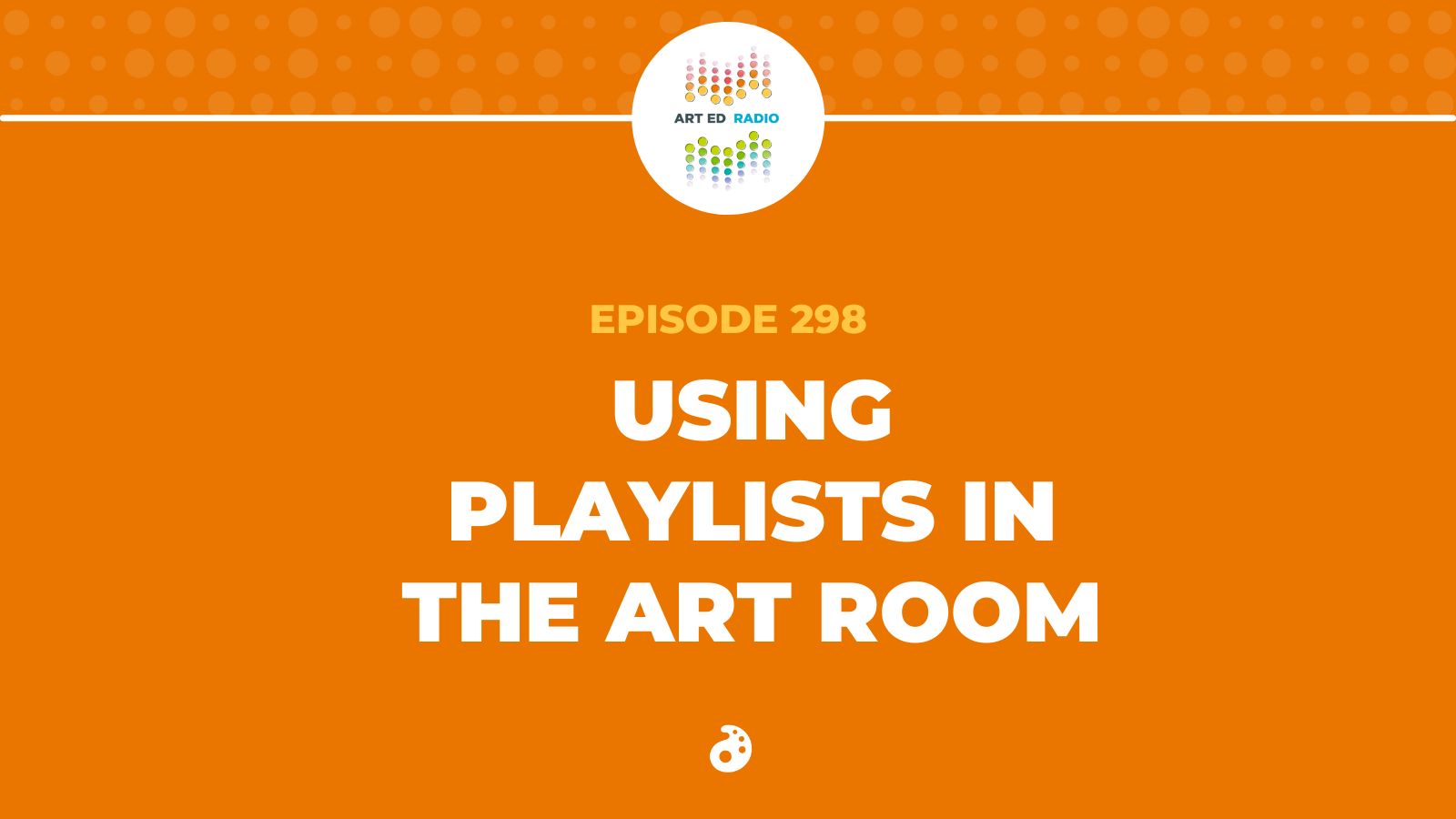
Transcript
Tim: Welcome to Art Ed Radio, the podcast for art teachers. This show is produced by The Art of Education University, and I’m your host, Tim Bogatz.
I’m not sure how much I have talked about this on the podcast, but I’m not a huge fan of social media. I only go on Facebook if the job requires it. I have an Instagram account that I literally have never posted on, but I do enjoy Twitter. Not on there a lot, but I do scroll through every once in a while to see what’s happening.
And a couple of months ago, I came across a really cool post by Lindsay Anderson. She’s @ArtfulAnderson on Twitter, by the way. And it was about playlists in the art classroom. And she had tweeted about that. I read an article that she wrote about that, and I reached out to Lindsay and she’s going to be my guest today.
Now, when I read her post about using playlists, and these are not playlists in the sense of one song after another, in case that’s where your mind was. They’re more of a guide for students, kind of helping them navigate from the beginning to the end of any particular project.
And I looked at them and thinking, this is a great way to organize the creative process. It’s a great way to give students autonomy. And so seeing the examples that Lindsay shared on her website, they were really well done. And the way she designed them just kind of hit all the points that resonate with me as a teacher. There’s student independence and autonomy, like I said. There’s choice within a defined structure. There’s a chance for exploration, the opportunity for skill building and the opportunity for students to make connections, just a lot of great things happening.
So, I’m looking forward to discussing with Lindsay everything involved with this idea. So, let me go ahead and bring her on the podcast now.
All right, Lindsay Anderson is joining me now. Lindsay, how are you?
Lindsay: I’m great. How are you doing?
Tim: I’m doing really well. Thrilled to have you on the show for the first time. I feel like I’ve followed you on Twitter for years and years now. So I’m glad we can finally-
Lindsay: … take years someone’s looking at it.
Tim: Yes, but I’m glad we can finally talk. But before we get started, can you introduce yourself? And tell us about you, your teaching, your interests, what you love outside of school, just whatever you would like to share?
Lindsay: Sure. So, my name is Lindsay Anderson and I teach in Frederick, Maryland. I have taught for, I believe this is my 13th year, 11 years at the middle school level in two different counties, but the one county was just like a little two-year stint down there. And then we came back, back home to Frederick County. So, I started in Frederick, ended up in Anne Arundel County and then we’re back home here.
And now, I’m at Frederick High School, which is, it’s definitely home for me. It feels so good. I’m absolutely loving the high school level. So, I don’t see myself going anywhere but high school, staying here, of course. And so I’m a wife, a mom. My husband is also in education. He’s the chief academic equity and something else, big title in a neighboring county.
Tim: Something very fancy, right?
Lindsay: Something fancy. But anyway, so we’ve immersed ourselves in it. I have two little ones. One is 19 months. Her name is Rain and I have a four-year-old. His name is Kai, up with some watery names, not Kai. It’s kind of by accident but it worked out. And then we have a dog and-
Tim: Well, I have to ask what kind of a dog because I love dogs.
Lindsay: Well, he’s a dachshund-beagle mix and he’s 12. He’s pretty much the cutest dog, probably in the world.
Tim: I can imagine.
Lindsay: So, as you can imagine with two little ones, time spent outside of school is very busy. But not only do I teach, I also have a small online art business where I also sell my work. Well, I sell my work online and then I also sell it in retail spaces downtown.
Tim: Wow. That’s really cool.
Lindsay: Yeah.
Tim: Well, I wanted to have you on today to talk about the idea of playlists. Something that you’ve been sharing that I think is really intriguing, I think, has captured the attention of a lot of people. But can you explain kind of what a playlist is and how you use it to guide the creative process for your students?
Lindsay: Yes, absolutely. I just want to preface all of this with, I know this year has been … It’s a difficult year where we’re in a post-pandemic, post-ish pandemic situation, and we’re getting students reacquainted with a normal learning experience, a normal school day. So, people often shy away from things that seem challenging or new. And I think that that’s warranted in this situation simplified.
But I truly believe that a playlist, especially in the art classroom for art teachers, is just such a great resource and I think it can help in this situation. So I guess the official definition of a playlist is it’s a sequence of resources or activities for students to complete. So, I really feel that playlists are a great resource for art teachers especially because of sort of the way we plan. We plan by unit or project typically.
So what a normal art project might look like is a hook or a challenge, get the students interested, explore a concept, a historical topic, an artist, a medium, a famous painting, any of those things. And then they probably move into some brainstorming of ideas about what the project is going to look like, rough drafts, thumbnail sketches, things like that.
Also after that, probably moving into a skill-building session, exploring different mediums, exploring different techniques and working through those and just getting comfortable with them. And then, of course, the students are going to create their final studio project, move into that big project piece. And then a bunch of things can happen after that. You could have a peer critique, or you could have a self-evaluation, or the students could be writing an artist statement. They could be presenting it in some way.
And then often, we have some extension activities for students who need to be challenged or some students who just finish things early. So that is actually how I guide the creative process in my playlist itself. So, my playlist follows the process of, and there are headings and it is explore, design, skill building, create, reflect, present, and extend. And those are the different sections. And then there are learning tasks and activities and things inside each one of those sections.
So that’s really what it looks like, and not only is a playlist a great guide for students, it’s also a planning resource for us as teachers. It keeps all of my ideas organized. It keeps all of the smaller activities, things like that. It’s all in just one live Google Doc and formatted in a nice, pretty way.
Tim: Which is important for us as art teachers.
Lindsay: Absolutely, absolutely.
Tim: Now, I assume within each of those sections with explore and design and skill building, students have some choices in there, but did they ever have trouble navigating the playlists? Because I don’t know, it seems to me like it might be something that kids are struggling with if you just leave them on their own and say, “Hey, work your way through these requirements.”
I guess it’s a long way of me asking, how much do you guide them? How often do you check in with them? How often are they checking in with you or turning things into you as they make their way through these playlists?
Lindsay: Yes. So I can honestly say that the format of the playlist that I used, it has been modified several times based on what my students need. And I think that people have this preconceived idea about playlists, that you can kind of give them to students and just let them go.
Tim: Just say, “Go, go, you guys go.”
Lindsay: “Yes, here you go. Here are all your activities.” And that is absolutely not how I use them in any way, shape or form. They are a great guide for students. It personalizes the learning for students in so many ways. And it frees up my time to work with them one on one in small groups nonstop.
So yes, I would say if I gave them this playlist and said, “Go for it,” they would probably have a lot of trouble navigating it. And I faced that in virtual learning because a lot of the students were working asynchronously and they needed that support. So what I ended up doing was I would create screencasts of just me going through each section and just going through the directions with them.
But now, since we’re back in the classroom, I make sure to have a daily agenda up on the board every day. And it pretty much tells them how to stay on pace with the playlist. And then of course, if there’s a question, I’m available to answer it. If they have an issue navigating an activity or not knowing which link to click on, I can support them with that.
So it’s great for the students who can take it and run with it, and it’s also a great guide if I say … So I don’t have to answer the same question 45,000 times at class. I can say, “Please, look at the skill-building section and there are some tutorial videos there for you.” I typically will do must-do tutorials or must-do activities and then some may-do activities. And then those may-do activities might be for the struggling student who needs a little bit of extra practice.
I mean, it supports them but I definitely have to guide them through it, especially in trying to support the executive functioning skills right now, because the last time they were in a normal classroom situation might have been two years ago. So, yeah, I don’t use it as a substitute for me. It’s a guide. It’s a support.
Tim: Okay. That makes a lot of sense. So, can you give me an example of just sort of the must-do or the can-do activities? I don’t know what the best example would be, but just maybe something you’re using now just so teachers can envision this. What would that look like? What are you giving to your kids as options for must-do’s and can-do’s?
Lindsay: Definitely. And actually just going back just for one second, you asked if they were checking in with me and how often, that happens nonstop. It’s always a check-in process and in the playlist, it does say stop and check in with Mrs. Anderson for this type of thing. So, they are checking in with me often.
But anyway, so as far as must-do and may-do activities, most of the time they fall within the skill building section. I might have some activities just based on different skill levels. If I already know my students and I know that they’re going to struggle with just observational drawing, there might be some observational drawing tutorials. If I know that they’re very good at drawing and need some extra help with whatever medium it is we’re going to be using, then that might be a may-do.
But again, it’s kind of … I can add and modify this live document as needed. So if I find that students are needing specific practice, I can add that at any time.
So the other part of the playlist, which I don’t want to get too far into it, but there is a lot of choice as far as subject medium technique and the playlist might have those different pieces in there as well. So it might sound like a lot of work upfront, but the benefits certainly outweigh the challenges of creating all of this because like I said, you can modify it as you go. If you don’t quite have your reflection piece of the project ready to go, add it later when you’re ready for it. But that live document is just a really nice organizational piece.
Tim: Yeah. That makes a lot of sense. And kind of in that same vein, I wanted to ask you how things have changed for you since you started using these playlists. Have you noticed any differences in your classroom since you started using playlists, either in the student work that you’re getting, the classroom environment, or just from your end as the teacher? What kind of differences have you seen?
Lindsay: And this is why I love them so much because I feel like my students feel supported, and I feel like they know that if I can’t help them right away, there’s probably something in this playlist that can help them or they can review a piece of it. I also feel like they feel a little bit more respected. They can handle moving forward at a pace that might be a little bit faster than what the rest of the class is moving.
And then even the extension piece, extend is the last section of my playlist. So there’s always something there. Maybe it’s an extension menu. Maybe it’s a choice board menu for students there. So, I feel like they feel organized and they know what to expect each day. I guide them. They also have this piece of the puzzle, so I’ve seen …
And also, I feel like I have just … The relationships that I can build in my class, because of having this playlist choice board situation going on, because I can spend my time with them. I can spend my time talking to them, working with them, pulling a small group up. So yeah, lots of changes.
And like I said, it sounds like a lot, but it’s really not. It’s already what we’re doing as art teachers. We’re already doing all of this. We’re just not putting it into a live document all the time. So, it’s a huge benefit, I think, in my classroom.
Tim: Yeah. That’s awesome. And just I love the idea of having individualized check-ins all the time where you’re working with kids as they progress, you have a much better idea of everything that’s going on with every student. Like you said, just all of those opportunities to talk with them throughout the process, so I think that’s a great thing.
And I guess for our teachers who want to try out a playlist, can they find where you’ve put this together? Have you shared these things and can you tell us where to find those? And also, once I do find those, what advice would you give for teachers who are just getting started with the idea of playlists?
Lindsay: Yeah, definitely. So you can find me on Twitter, @ArtfulAnderson. And I often share the blog posts that I write about these topics. And I recently wrote a blog post about playlists. And actually you can see the model and the format that I use, it is on that blog post. The website itself is artfullyblended.com, and it’s under construction. It’ll probably always be under construction, but the blog is there and you can see some of the student work and everything that goes along with it. But I also provided a few templates that people could just click and copy and make if they feel so inclined.
And then as far as advice for people who want to give it a go, just start with one project. Just start with one project. Maybe it’s a project that you’re going to do later in the year, so you can start planning it now. And then I think once you see how organized and just how it all fits together, I think you’ll probably want to do more of them because it’s kind of addicting to know that everything is in one place.
And because we often teach the same class multiple times, so it’s easy to get confused. Did I do that demonstration with this block? Or did I repeat myself here? But this really just, it puts it all into perspective for us and it’s just a great student-facing document.
Tim: That’s awesome. Well, Lindsay, thank you so much. I appreciate you sharing the idea. I appreciate the conversation and hopefully some teachers can give this a try because I think it’s a great concept and great idea for teachers and students alike. So, thank you for sharing everything with us.
Lindsay: Yes. Thank you so much for having me.
Tim: I hope that if you are interested in the idea of using these playlists, that you are able to check out the resources that Lindsay has put together. We will link to her Twitter account as well as a couple of examples of playlists. So, make sure you take a look at those and see if those are something that can work for you or something that can work for your students.
I appreciate Lindsay being willing to share all of those things, as well as giving us some time today and hopefully giving you a new idea that you can take back to your classroom.
Art Ed Radio is produced by the Art of Education University with audio engineering by Michael Crocker. Thank you as always for listening, and we’ll talk to you next week.
Magazine articles and podcasts are opinions of professional education contributors and do not necessarily represent the position of the Art of Education University (AOEU) or its academic offerings. Contributors use terms in the way they are most often talked about in the scope of their educational experiences.
